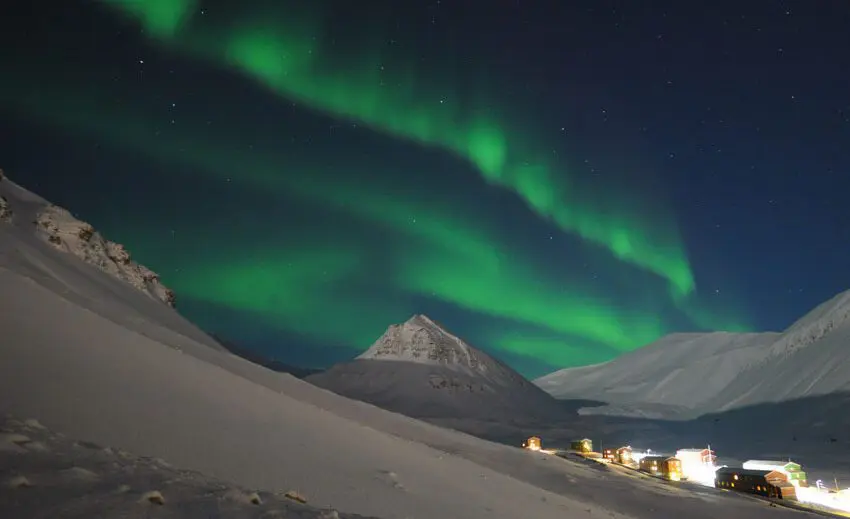Heating and vertical winds in dayside Aurora

Northern lights (Aurora Borealis) above Sarkofagen and Nybyen. Photo: Aki Vähä/UNIS.
Top image: Northern lights (Aurora borealis) over Sarkofagen and Nybyen. Photo: Aki Vähä/UNIS.
Åsmund Skjæveland has studied the details of the atmospheric mechanisms that take the energy from the northern lights and create warm and vertical winds. Skjæveland will defend his PhD thesis on Friday 12 May at the University of Oslo.
10 May 2017
Press release from the University of Oslo and the University Centre in Svalbard (UNIS)
Åsmund Skjæveland’s dissertation provides the basis for a thorough understanding and not least the modeling of the fine structure in the heating and vertical winds in the dayside Aurora (northern lights).
The dissertation can be divided into three:
- One case study of a particular day where he goes into detail on what happens in the northern lights from minute to minute when the heat is turned on and off.
- One case study that looks at the variation from minute to minute in vertical electric winds, and if the wind is free from Jorda.
- A statistical work that provides the basis for the modeling of heat production in the daily light.
Today’s model of the upper atmosphere in the Polar regions is rough and does not capture nuances in processes. But what is happening in the dayside aurora above Svalbard on a small to medium scale, and using large scale models to simulate the upper atmosphere, will often underestimate the strength of the processes.
Large amounts of heat are produced in the dayside aurora above Svalbard. When the northern lights glow, everything changes around in a few seconds. Every time the northern lights flare up, the atmosphere around the aurora warms up. Electrically charged gas in the upper atmosphere will soon rise from tens to hundreds of kilometers. Neutral gas is swelling up apparently less dramatically, but in larger amounts. The atmosphere is dramatically stirred and disturbs low Earth orbit satellites. The electric gases that are lifted far enough will disappear out in space, and so the Earth is losing some oxygen all the time. By going into detail and drawing out categories rather than an average, the dissertation provides a basis for proper modeling and accurate notification of ionosphere activity.
Dissertation
Åsmund Skjæveland will defend his PhD thesis entitled “Energy inputs and upflow motion in the cusp” Friday 12 May at 13:15 at the University of Oslo. He will give a trial lecture entitled: “Mass escape from Earth’s atmosphere” at 10:15 the same day. Both lectures will take place in Lille fysiske auditorium at the University of Oslo.
Supervisors have been Professor Jøran Moen (UiO and UNIS) and Professor Herbert C. Carlson.

About the candidate:
Åsmund Skjæveland has studied at the University Center in Svalbard (UNIS) and the University of Oslo. He has previously worked at the Norwegian Mapping Authority’s Earth observatory in Ny-Ålesund, Svalbard. He currently works with position services and satellite navigation in the geodetic division of the Norwegian Mapping Authority.